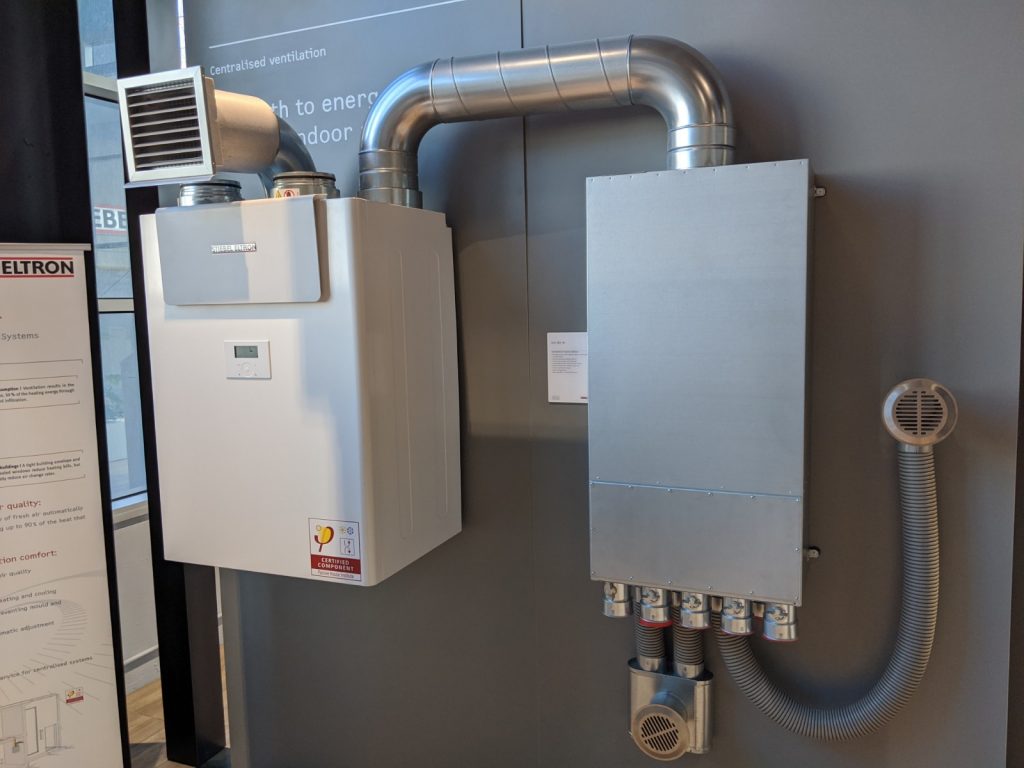Checking out the Perks of Heat Recovery Ventilation for Power Performance in Residences
Heat Recovery Ventilation (HRV) systems offer house owners a practical approach to boosting power efficiency. By redeeming warmth from outbound air, these systems can substantially reduce home heating and cooling prices. Additionally, they give a steady supply of fresh air, boosting interior air top quality and convenience degrees. As homeowners think about sustainable options, comprehending the nuances of HRV systems ends up being increasingly crucial. What elements should one assess prior to making such an investment?
Recognizing Heat Recovery Ventilation Systems

How HRV Enhances Indoor Air High Quality

Energy Financial Savings: The Economic Advantages of HRV
Making best use of energy efficiency, heat recovery ventilation (HRV) systems provide considerable monetary benefits for property owners. By recouping and reusing heat from exhaust air, HRVs markedly minimize heating & cooling costs. This modern technology can bring about power savings of approximately 30%, depending on environment and use patterns. Home owners usually discover minimized utility bills quickly after installation, making HRVs a financially sensible investment with time. In addition, several regions offer rewards or refunds for energy-efficient upgrades, better enhancing the monetary allure. As power costs proceed to increase, the cost-effectiveness of HRVs comes to be significantly clear. Overall, the consolidation of HRV systems not just advertises power efficiency however also contributes to long-term financial cost savings for households.
The Environmental Impact of Heat Recovery Ventilation
A significant environmental advantage of heat recovery ventilation (HRV) systems hinges on their capability to decrease total power intake. By redeeming heat from exhaust air and transferring it to inbound fresh air, HRV systems lessen the demand for energy-intensive heating and cooling down methods. This reduction in power demand contributes to reduce greenhouse gas emissions, as much less fossil fuel is called for to preserve comfortable interior temperature levels. Additionally, HRV systems enhance try this site interior air top quality by effectively trading stagnant air with fresh outdoor air, decreasing reliance on mechanical cooling systems that can harm the environment. On image source the whole, the implementation of HRV systems sustains lasting living methods and lines up with worldwide efforts to deal with environment adjustment by promoting power effectiveness in domestic setups.
Picking the Right HRV System for Your Home
Just how can homeowners guarantee they select the appropriate heat recovery ventilation (HRV) system for their requirements? Initially, they should examine their home's size and layout, as these elements affect air flow demands. Next, examining the system's performance scores is crucial, as greater scores suggest much better efficiency and power financial savings. Property owners ought to additionally consider installation and upkeep prices, comparing different brands and models for value. Additionally, it is necessary to examine noise degrees, as some systems operate even more quietly than others. Consulting with heating and cooling specialists can provide tailored suggestions based on particular home conditions. Analyzing user testimonials and warranties can assist in making an informed decision, making certain that the chosen HRV system effectively improves interior air top quality and energy efficiency.
Often Asked Inquiries

How Usually Should I Clean or Preserve My HRV System?
The frequency of cleansing or keeping a heat recovery ventilation (HRV) system generally depends on use and environmental aspects. Generally, it is suggested to do maintenance every six months to assure peak performance and air quality.

Can HRV Systems Help In Reducing Humidity Degrees Inside Your Home?
HRV systems can successfully decrease interior humidity levels by exchanging stagnant, moist air with fresh, drier air from outside. HRV Heat Recovery Ventilation. This process helps maintain a balanced interior setting, improving convenience and avoiding moisture-related problems
What Is the Lifespan of a Regular HRV System?
The life-span of a regular heat recovery ventilation (HRV) system differs, typically lasting in between 10 to 15 years. Regular upkeep can extend its performance and functional life, making certain peak performance throughout its usage period.
Are There Any Sound Problems With HRV Systems?
Noise interest in HRV systems can emerge, particularly from fan operation. However, numerous modern-day systems are made to minimize sound degrees, guaranteeing they run quietly while preserving efficiency, which resolves prospective disturbances in living settings.
Can I Install an HRV System Myself, or Do I Required a Specialist?
The private contemplated whether to mount the heat recovery ventilation (HRV) system directly or employ a specialist. Normally, while do it yourself installment is feasible, expertise warranties correct capability and conformity with local building regulations, improving system efficiency.